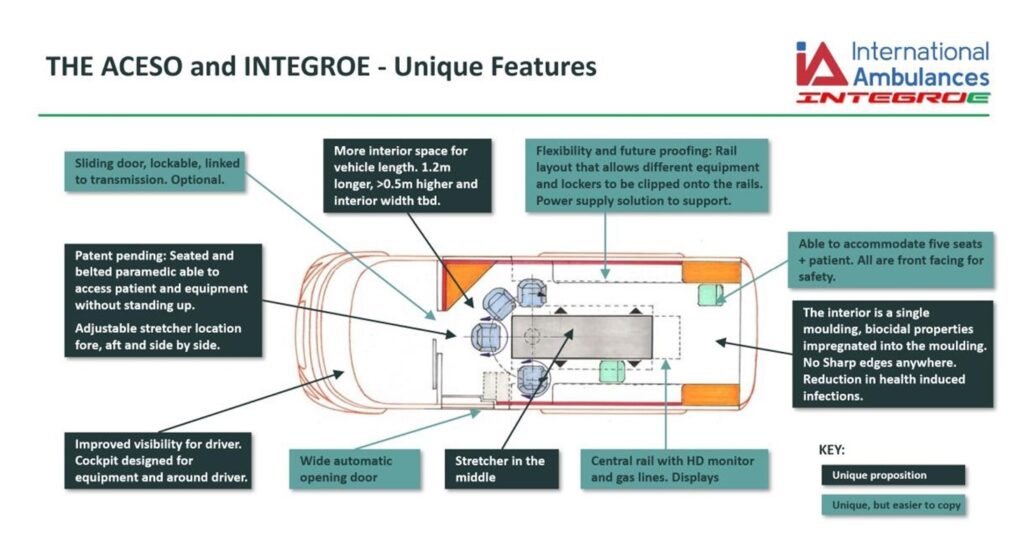Body Interior:
The ambulances outside measurements of the body are shorter, narrower, and lower than any standard general ambulance, yet it has an interior patient area ceiling of 6 foot 10 inches, with an additional 1.3 meters longer interior than an existing ambulance. Every surface has a curved shape there are no sharp corners (in 2019, 9000 hours were lost due to paramedics falling over and hurting themselves on these sharp worktop-type corners) We have no need for paramedics to stand because we have a seat with a seat belt on a curved “U” shaped track to circle the patent on the stretcher that is in the centre of the patient area. There are now two tracks outside the aircraft-type ceiling lockers that have attached rotating brackets for the blood / air / x-ray equipment. The x-ray machine is fitted robotically for sterilisation. With four movement cameras and two oxygen/ Co2 sensors, when the paramedics leave the ambulance, the sensors prove there is nobody in the ambulance, so the doors lock and a red light comes on outside the driver’s door, then the x-ray machine goes down the ambulance interior going 360 degrees horizontal and 180 degrees vertical to 100% sterilise the interior in 3.4 minutes. The green light outside then comes on and the doors unlock.
There is a driver / patient area bulkhead, fitted with an acrylic bulletproof sliding door for paramedic security and safety. This also means the driver and any other paramedic do not have to get of out the ambulance to enter the patient area. This is a feature that the unions are looking to standardise in the UK market.
The driver’s department has two air-suspended seats, that are adjustable to the paramedic’s weight that can recline 30 degrees, raise and lower due to the size of the paramedic and now we are adding an electric pedal box that can be electrically switched back or forward to suit paramedics height. Two air conditioner units are fitted, one for the full driver’s area and the other for the patient area. The driver’s unit has a third area to cool cans and bottles of drink whilst there is a 12-volt kettle and mugs recessed in the dash. Dual Zone Air Conditioning is taken seriously, especially in extreme circumstances where temperatures of forty-five degrees plus are reached. It is imperative to maintain a comfortable and safe climate within the ambulance for the patient and crew. With the rear tailgate open an air blanket effect is formed with double the power of A/C to ensure minimal temperature disruption. Regarding battery consumption this is also supported by a backup from one of the additional three battery compartments as in total the ambulance has four, all with a part to play with the technology and engineering.
